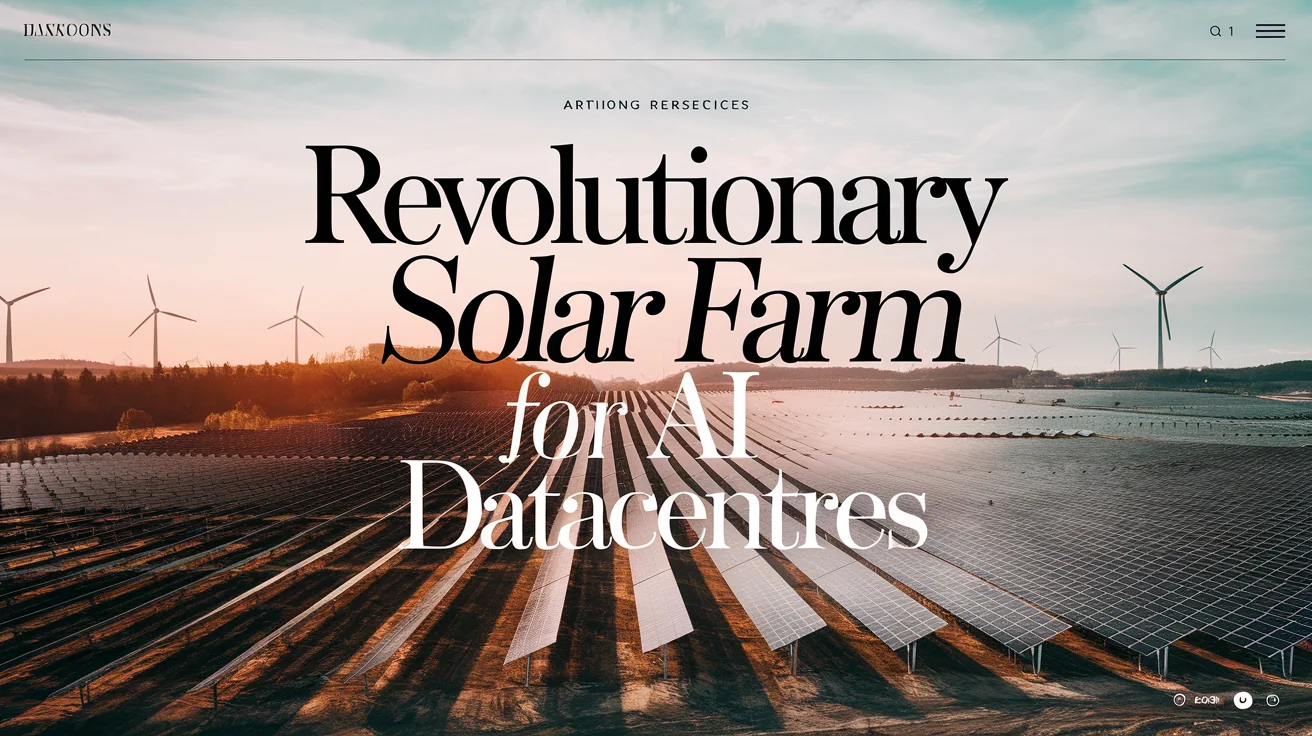Revolutionary Solar Farm for AI Datacentres

SunCable, an energy company, has proposed a massive solar farm in the Northern Territory that could significantly power an AI datacentre precinct. This project aims to position Australia as a global leader in green industrial development. If realized, it would become Australia’s largest solar farm, generating up to 20GW of electricity, which is substantially more than the output of a large coal-fired power plant.
The intended development at Muckaty Station, located in the Barkly region, is part of SunCable’s broader plans to build a 12,000ha solar farm at Powell Creek Station. The scope of this endeavor involves clearing approximately 50,000ha of land, an area equivalent to 25,000 Melbourne Cricket Grounds, including vital habitats for Australia’s iconic bilby, as noted in the documents submitted to the Northern Territory Environment Protection Authority.
Ryan Willemsen-Bell, CEO of SunCable, emphasized the significance of the NT developments, asserting they provide a compelling proposition for attracting global investments in an AI datacentre hub. However, environmental concerns have been raised by the Environment Centre NT (ECNT), which described the scale of the Muckaty proposal as “gobsmacking” and potentially unmatched in Australia or worldwide.
SunCable has reportedly engaged with global hyperscalers—companies that build and operate extensive datacentres—to meet their demand for low-cost and low-carbon energy solutions capable of supporting the first datacentre operations in the Barkly region by 2028. Willemsen-Bell argued that the solar farm could help curb the environmental impact of datacentres on the national electricity market by providing off-grid infrastructure.
This project presents a pivotal opportunity for Australia to assert its role as a leader in sustainable AI infrastructure and digital technology. Willemsen-Bell remarked, “Australia can lead – not be left behind.” Recently, SunCable reached an agreement with traditional owners and the Northern Land Council to proceed with the 12,000ha solar facility at Powell Creek Station.
Documents submitted for the Muckaty solar proposal indicate SunCable’s commitment to minimizing impacts on greater bilby habitats by refining project footprints. Further studies and consultations with traditional owners are planned to select smaller sites within the examined 50,000ha area.
Despite this progress, Kirsty Howey, executive director of the ECNT, raised alarms about the destruction of bilby habitats and impacts on precious water resources in such an arid region. She noted that the energy generated from the project primarily targets industrial customers, raising concerns about whether it would provide energy security and equity for local communities facing chronic energy poverty exacerbated by climate change.
Dr. Dylan McConnell, an energy systems researcher at the University of New South Wales, also pointed out uncertainties surrounding the actual energy demand from proposed datacentres, suggesting that discussions around energy needs might be more hype than reality.
SunCable acknowledged the scrutiny surrounding the project’s scale, emphasizing that the aim of the review process is to gather evidence, refine the project’s design, and ensure responsible practices are in place before making final decisions. They reiterated their commitment to avoiding negative impacts on bilby habitats and ensuring sustainable water resource usage.